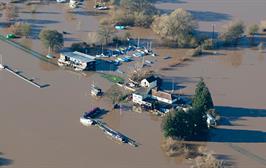Defra and Environment Agency announce £2.65bn flood defence investment programme
The Department for Environment, Food and Rural Affairs (Defra) and Environment Agency have announced a £2.65bn two-year investment programme for flood defence infrastructure. The programme encompasses over 1,000 flood schemes, with £430m allocated for construction and £220m for defence reinstatement for 2025. The government has prioritised £140m to complete 29 schemes facing cost pressures. Major projects receiving funding include: the Derby Flood Risk Management Scheme (£34.6m), North Portsea Island Coastal Flood scheme (£13.8m), and Preston and South Ribble scheme (£10.4m). The investment aims to protect communities and businesses from flooding impacts while supporting local economic growth.





